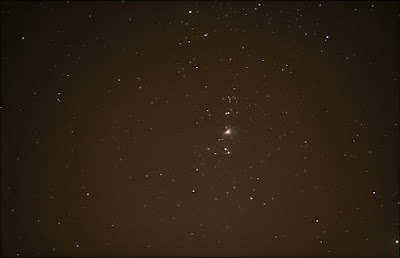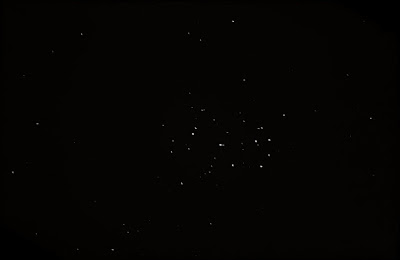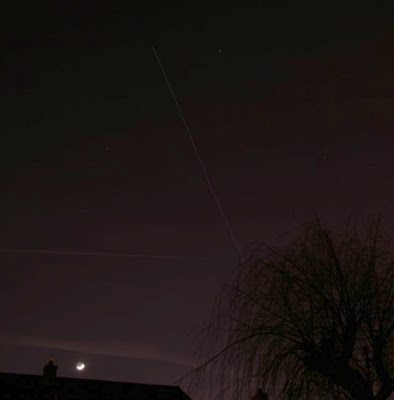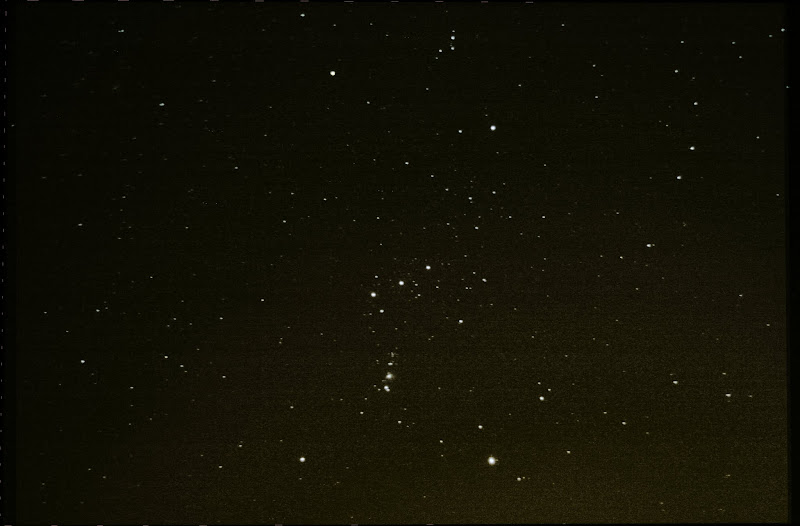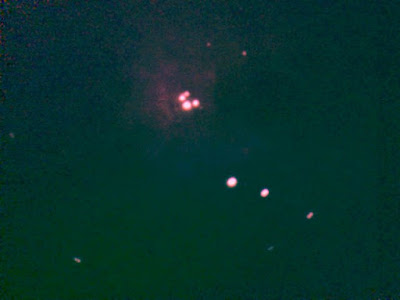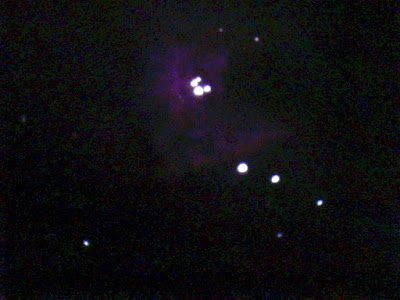My new camera arrived - a Canon EOS 400D. The good news about this is that it will do long exposures. It will do timed exposures up to 30s, and has a bulb setting for arbitrary times.
The bad news is it is quite a complex bit of kit, and will take some time to get to know how to use it.
The good news - its a clear night. The bad news - I'm not even sure how to switch on the camera, let alone use it.
Still - a clear night is not to be wasted, so I set up the equipment, and managed to get the camera attached to the back of the telescope with the appropriate adapters. Focusing was as difficult with this as with the LPI interface I soon found out. I also managed to confuse myself a number of times with the mirror setting. This allows you to either view from the top or straight through, but typically I'd find the right star with the normal eyepiece, then try and focus the camera and find it pitch black. Then it would tumble - I had to switch the mirrors over!
I tried some images of M42 and got some results, which is more than I'd ever done before. They weren't very good though. The wind was howling around and a number of roads had been closed to high sided vehicles, so it wasn't a good setting for long exposures. I also found that the mirror movement caused blurring and although I think there is a setting to disable that, I didn't know what it was. I reverted to the hat-trick - where you cover the lens, press the shutter, wait for a second for it to steady, then uncover the lens. I also covered it up towards the end of the shot for good measure. The wind continued to come in gusts though.
However with a bit of fiddling around on one of the better shots I go something that looked nebula-ish.

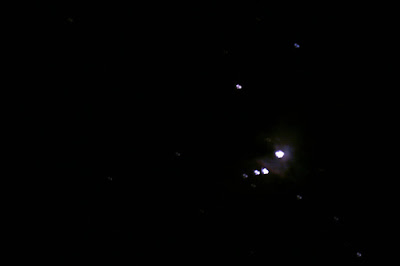
I tried Saturn too, but just guessed at the exposure, and it came out over exposed. I was getting very cold fingers by this time!

I then took some more images of Saturn with the LPI experimenting with the FITs save format, but couldn't get registax to accept them in any reasonable way.
